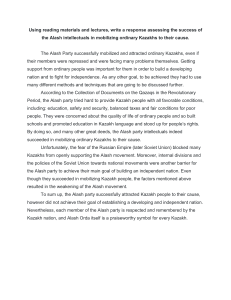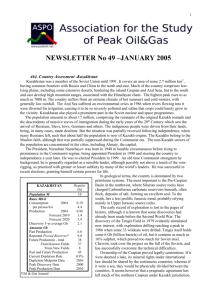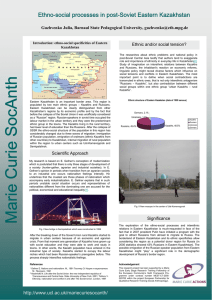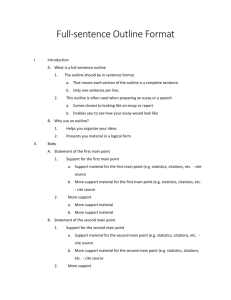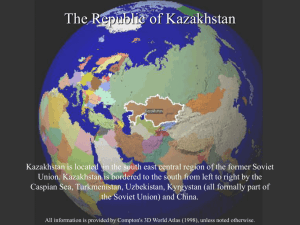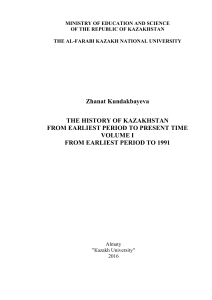Dr. Kathleen J. Hancock Colorado School of Mines Examples of In-Text Citations
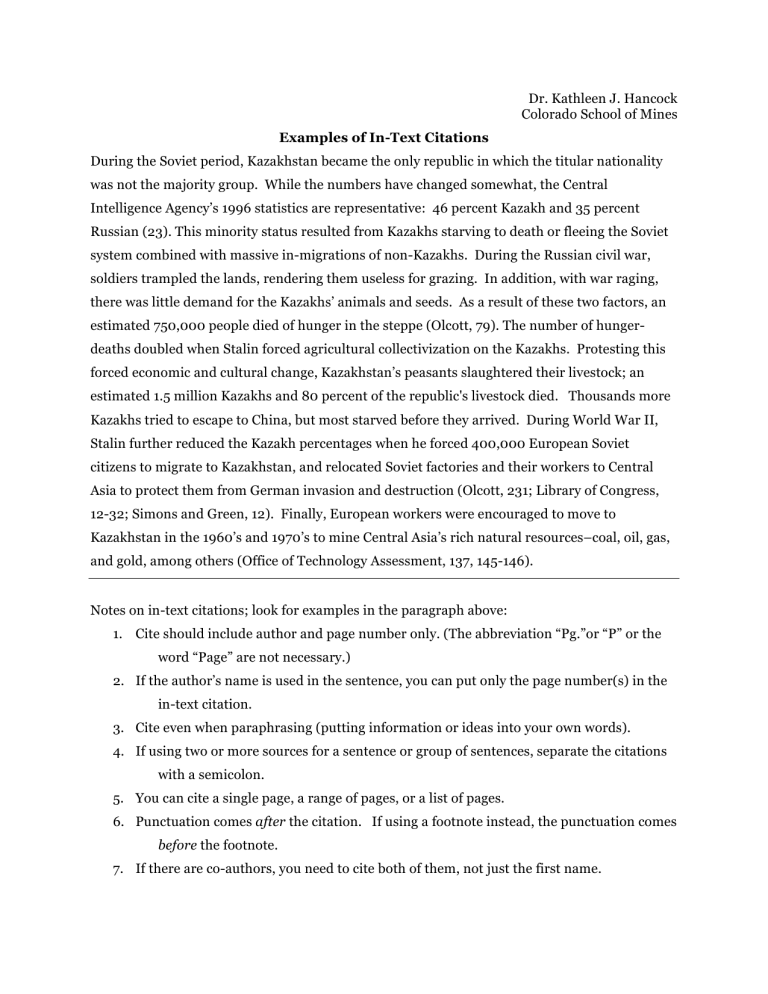
Dr. Kathleen J. Hancock
Colorado School of Mines
Examples of In-Text Citations
During the Soviet period, Kazakhstan became the only republic in which the titular nationality was not the majority group. While the numbers have changed somewhat, the Central
Intelligence Agency’s 1996 statistics are representative: 46 percent Kazakh and 35 percent
Russian (23). This minority status resulted from Kazakhs starving to death or fleeing the Soviet system combined with massive in-migrations of non-Kazakhs. During the Russian civil war, soldiers trampled the lands, rendering them useless for grazing. In addition, with war raging, there was little demand for the Kazakhs’ animals and seeds. As a result of these two factors, an estimated 750,000 people died of hunger in the steppe (Olcott, 79). The number of hungerdeaths doubled when Stalin forced agricultural collectivization on the Kazakhs. Protesting this forced economic and cultural change, Kazakhstan’s peasants slaughtered their livestock; an estimated 1.5 million Kazakhs and 80 percent of the republic's livestock died. Thousands more
Kazakhs tried to escape to China, but most starved before they arrived. During World War II,
Stalin further reduced the Kazakh percentages when he forced 400,000 European Soviet citizens to migrate to Kazakhstan, and relocated Soviet factories and their workers to Central
Asia to protect them from German invasion and destruction (Olcott, 231; Library of Congress,
12-32; Simons and Green, 12). Finally, European workers were encouraged to move to
Kazakhstan in the 1960’s and 1970’s to mine Central Asia’s rich natural resources–coal, oil, gas, and gold, among others (Office of Technology Assessment, 137, 145-146).
Notes on in-text citations; look for examples in the paragraph above:
1.
Cite should include author and page number only. (The abbreviation “Pg.”or “P” or the word “Page” are not necessary.)
2.
If the author’s name is used in the sentence, you can put only the page number(s) in the in-text citation.
3.
Cite even when paraphrasing (putting information or ideas into your own words).
4.
If using two or more sources for a sentence or group of sentences, separate the citations with a semicolon.
5.
You can cite a single page, a range of pages, or a list of pages.
6.
Punctuation comes after the citation. If using a footnote instead, the punctuation comes before the footnote.
7.
If there are co-authors, you need to cite both of them, not just the first name.
